Related Research Articles

Ivan Petrovich Pavlov was a Russian and Soviet experimental neurologist and physiologist known for his discovery of classical conditioning through his experiments with dogs.
Algor mortis, the third stage of death, is the change in body temperature post mortem, until the ambient temperature is matched. This is generally a steady decline, although if the ambient temperature is above the body temperature, the change in temperature will be positive, as the (relatively) cooler body acclimates to the warmer environment. External factors can have a significant influence.

William Benjamin Carpenter CB FRS was an English physician, invertebrate zoologist, and physiologist. He was instrumental in the early stages of the unified University of London.

Charles Robert Richet was a French physiologist at the Collège de France and immunology pioneer. In 1913, he won the Nobel Prize in Physiology or Medicine "in recognition of his work on anaphylaxis". Richet devoted many years to the study of paranormal and spiritualist phenomena, coining the term "ectoplasm". He believed in the inferiority of black people, was a proponent of eugenics, and presided over the French Eugenics Society towards the end of his life. The Richet line of professorships of medical science continued through his son Charles and his grandson Gabriel. Gabriel Richet was also one of the pioneers of European nephrology.
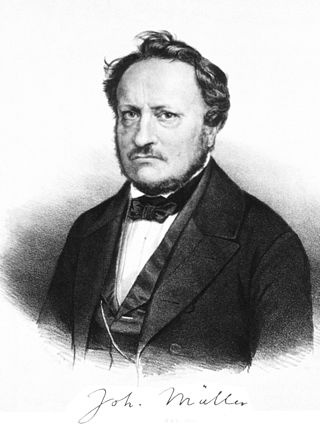
Johannes Peter Müller was a German physiologist, comparative anatomist, ichthyologist, and herpetologist, known not only for his discoveries but also for his ability to synthesize knowledge. The paramesonephric duct was named in his honor.

Edgar Douglas Adrian, 1st Baron Adrian was an English electrophysiologist and recipient of the 1932 Nobel Prize for Physiology, won jointly with Sir Charles Sherrington for work on the function of neurons. He provided experimental evidence for the all-or-none law of nerves.

Paul Bert was a French zoologist, physiologist and politician. He is sometimes given the sobriquet "Father of Aviation Medicine".

Moritz Schiff was a German physiologist and the elder brother of the chemist Hugo Schiff (1834-1915), particularly known for his staining technique.
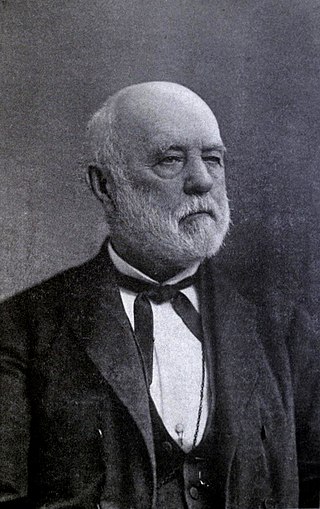
William Samuel Waithman Ruschenberger was a surgeon for the United States Navy, a naturalist, and an author.

Doctor Ivan Mikhaylovich Sechenov, was a Russian psychologist, physiologist, and medical scientist.
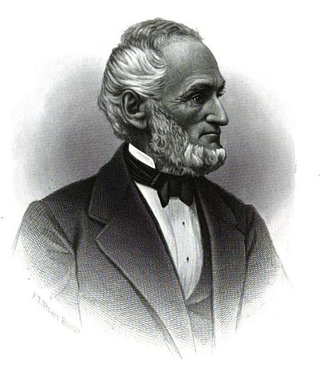
Amasa Walker was an American economist and United States Representative. He was the father of Francis Amasa Walker.

William Sharpey FRS FRSE LLD was a Scottish anatomist and physiologist. Sharpey became the outstanding exponent of experimental biology and is described as the "father of British physiology".

Johann Nepomuk Czermak was an Austrian-German physiologist.

Otto Funke was a German physiologist born in Chemnitz.

Horatio Curtis Wood Jr. was an American physician and biologist. Born into a wealthy Pennsylvania family, he attended the Medical Department of the University of Pennsylvania, and after serving as a surgeon in the American Civil War, continued to teach at the University. A member of the National Academy of Sciences, he was known for his 1874 text Treatise on Therapeutics, which became a widely used medical textbook, and also for his botanical and zoological work: writing on freshwater algae, fossil plants, arachnids, and myriapods.

In anatomy and neurophysiology, this is the finding that the anterior spinal nerve roots contain only motor fibers and posterior roots only sensory fibers and that nerve impulses are conducted in only one direction in each case. The nature and the physiology of the phenomena were described independently by the British anatomical scientist Sir Charles Bell and the French physiologist François Magendie, later confirmed by the German physiologist Johannes Peter Müller.

Elizabeth Matilda Tansey is an Emerita Professor of the history of medicine and former neurochemist, best known for her role in the Wellcome Trust's witness seminars. She previously worked at Queen Mary University of London (QMUL).
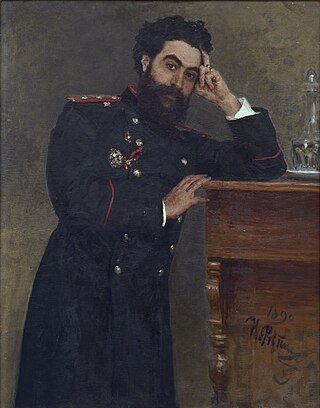
Ivan Romanovich Tarkhanov or Ivane Tarkhnishvili was a Georgian physiologist and science populariser from the Tarkhan-Mouravi noble family. He led the Department of Physiology at the Academy of Military Medicine from 1877 to 1895 and authored a slew of articles on physiology for the Brockhaus and Efron Encyclopedic Dictionary. Among his numerous contributions was the discovery of the skin galvanic reflex (1889). However, Tarkhnishvili's most significant contribution was the discovery of the influence of X-rays on the central nervous system, animal behavior, the heart and circulation, and embryonic development (1896-1903). Indeed, these works have given rise to a new field in science as Radiobiology.
Wilhelm Detmer was a German botanist, plant physiologist and agriculturalist.
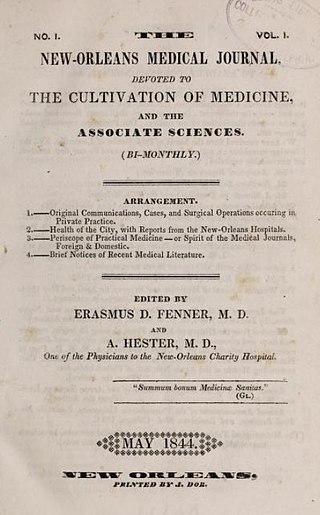
The New Orleans Medical and Surgical Journal was a bimonthly medical journal published between 1844 and 1952, and the predecessor of the contemporary Journal of the Louisiana State Medical Society. It published Samuel Cartwright's pseudoscientific theories of race and disease, including the first treatment of the conjectural disease drapetomania. The journal was involved in debates on neuroscience and circulation in the 19th century.
References
- 1 2 3 This article incorporates text from a publication now in the public domain : . New International Encyclopedia . 1905.
- 1 2 Riess, K. (January 1961). "The rebel physiologist, Bennet DOWLER". Journal of the History of Medicine and Allied Sciences. 16: 39–48. doi:10.1093/jhmas/XVI.1.39. ISSN 1468-4373. PMID 13741567.
- 1 2 3 4 5 This article incorporates text from a publication now in the public domain : . Appletons' Cyclopædia of American Biography . 1900.
- ↑ Meek, Walter J. (May 1938). "Bennett Dowler, a Forgotten Physiologist*Read before the Medical History Seminar, University of Wisconsin, at the home of Dr. William Snow Miller". Annals of Medical History. 10 (3): 237–246. ISSN 0743-3131. PMC 7932572 . PMID 33943166.
- ↑ The National Archives in Washington DC; Washington DC, USA; Eighth Census of the United States 1860; Series Number: M653; Record Group: Records of the Bureau of the Census; Record Group Number: 29
- ↑ Riess, Karlem (1953). "The New Orleans Academy of Sciences: Its First Hundred Years (1853-1953)". The Scientific Monthly. 77 (5): 255–259. Bibcode:1953SciMo..77..255R. ISSN 0096-3771. JSTOR 21172.